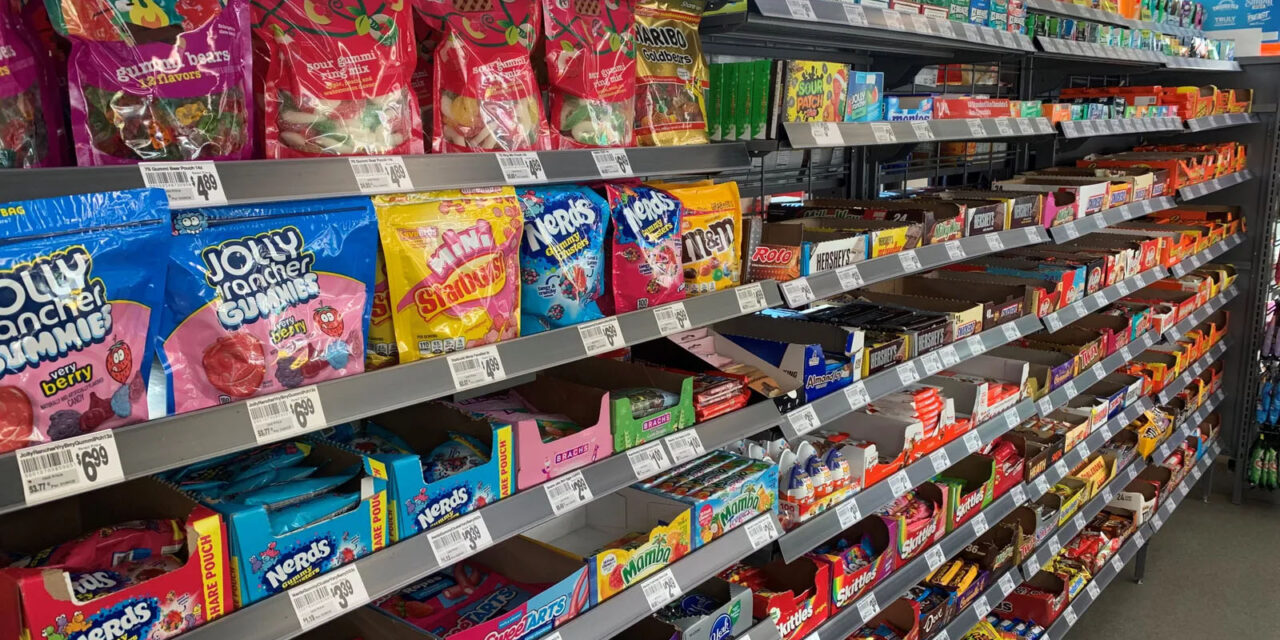Permission granted by Amanda Baltazar
By Amanda Baltazar
Source: www.cstoredive.com, May 2024
While many customers want their indulgences to be functional, others are focused on nostalgic favorites or innovations from small producers, experts say.
Candy sales in convenience stores are booming, according to market research company Circana. In 2023, convenience stores generated $8.5 billion in candy, mint and gum sales, up 11.9% over 2022, according to the NCA.
However, these sales increases are being driven by higher prices, while unit sales and volumes are in decline.
“The price point compared to other snacks is affordable, but you’ve got a perfect storm — prices are high, cocoa is high, so prices are a little elevated and consumers are not walking away, they’re just buying less,” said Dan Sadler, principal with Chicago-based Circana.
As customers trade down, private label candy has emerged as a winner. A leader in this area is 7-Eleven, which has an extensive offering including gummies and jelly beans.
According to the National Confectioners Association, store-brand chocolate sales grew 12.6% in 2023, but were still only 2.2% of chocolate unit sales. Store brand non-chocolate sweets, meanwhile, make up about 5.4% of unit sales
Candy sales remain fairly strong because consumers consider chocolate and other sweets an affordable treat. It’s tied to their emotional well-being, seen as a reward but also a pick-me-up, Sadler pointed out. Eighty six percent of consumers say they are OK with treating themselves with candy — on average, twice or three times a week, according to the NCA.
“C-stores have been a particularly bright spot for confectionery companies, as younger consumers are drawn to the unique, fun options offered by the segment,” said Mike Kostyo, vice president with Menu Matters, a Vermont-based food consulting firm. “Candy is often a poster child for affordable indulgence.”
Non-chocolate sales are going strong
While dollar sales of chocolate were up in 2023, according to Circana, unit and volume sales were down by 5.4% and 4.4%, respectively. These drops were due to households buying chocolate less frequently and purchasing smaller amounts, according to the NCA.
Non-chocolate candy is filling the gap left in the candy market by chocolate. Non-chocolate candy sales were almost $12 billion in 2023, up 12.2% over the previous year, the NCA said. Chocolate, meanwhile, earned $19.3 billion.
There’s a lot of variety in non-chocolate candy, from gummies to lollipops, and retailers last year reported that they’d expanded their assortment, with the average items per store up by 7.4%, says the NCA. The biggest increase in sales came from novelty candy (up 49%) but hard sugar and rolls sales were up 10.7% and chewy candy by 9.5%. Mint sales jumped 13.9%.

Sour candy is popular with younger generations, said Anne-Marie Roerink, principal, 210 Analytics, as are licorice and gummies that change flavors as you eat them. “There’s been a lot of innovation in textures, flavors, shapes, and that’s driving a lot of engagement with younger generations,” she said.
Kostyo pointed to the popularity of freeze-dried candies and “sweet-heat” products with spicy profiles as well.


